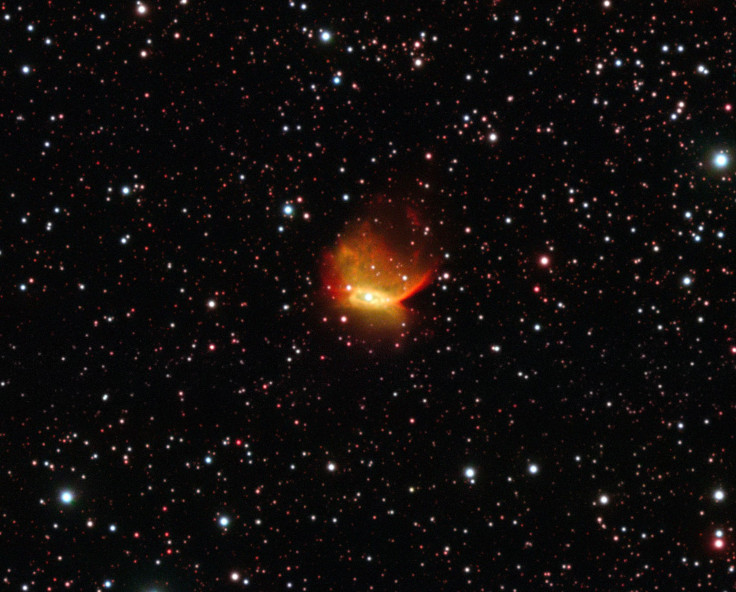A Supernova In The Making Caught On Camera: Merging White Dwarf Stars Destined For A Massive Explosion

Two white dwarf stars are orbiting each other in the constellation Aquila, and they're destined to collide -- in 700 million years. These massive stars are getting closer and closer and will merge into a new star. This star will be so massive that it will collapse into itself, triggering a massive explosion and a Type Ia supernova.
The discovery of the white dwarfs came when astronomers using the European Southern Observatory's Very Large Telescope were trying to figure out why planetary nebulae, the shells of ionized gas ejected by red giants at the end of their life, have such irregular shapes. Some of the more famous examples include the Hourglass Nebula and the Helix Nebula.

When the researchers pointed the telescope to planetary nebula Henize 2-428, located 4,500 light-years from Earth, they discovered two white dwarfs at the center of the structure. White dwarf stars are extremely dense stellar remnants, low- or medium-mass stars that are at the end of their life and have shed their layers of gas. The sun, at the end of its evolutionary life, will become a white dwarf.
The two stars at the center of the planetary nebula have a mass just under that of the sun and have an orbital period of four hours. Over millions of years, the two stars will get closer to each other, according to Einstein's theory of general relativity. After 700 million years, the stars will merge into one massive star. This star will be too massive and will collapse into itself. As it collapses, it will trigger an unstoppable nuclear explosion, known as a Type Ia supernova. The merging of two white dwarfs has been theorized to create a Type Ia supernova, and these observations support that stance. The merging stars also will lead to new insights into this important type of supernova.

"It will have important repercussions for the study of supernovae Type Ia, which are widely used to measure astronomical distances and were key to the discovery that the expansion of the universe is accelerating due to dark energy," said a statement by Miguel Santander-García of Observatorio Astronómico Nacional, Alcalá de Henares, Spain, and Instituto de Ciencia de Materiales de Madrid (CSIC), Madrid. The research was published in the journal Nature.
© Copyright IBTimes 2024. All rights reserved.





















